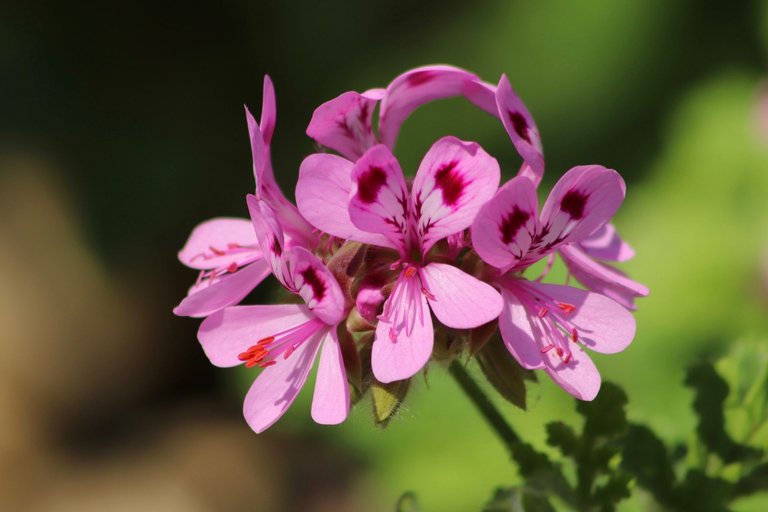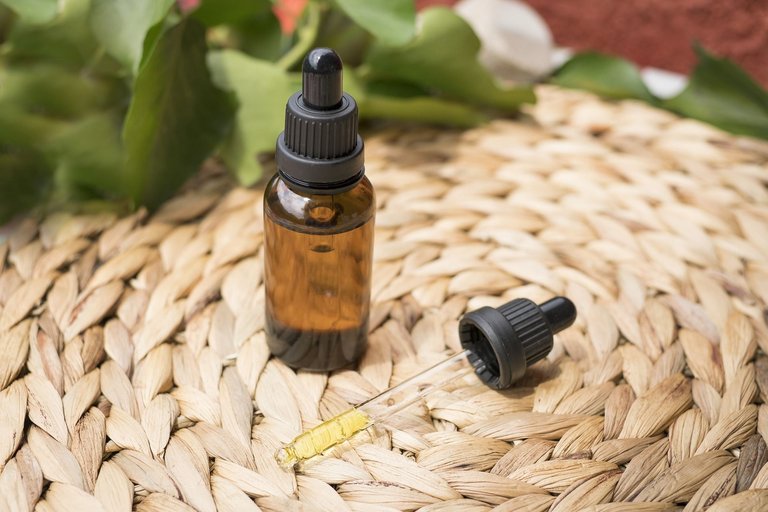Good morning everyone, today I would like to share with you my personal experience in using geranium as a phytotherapeutic remedy.

Foto di Annette Meyer da Pixabay
Description: perennial herbaceous plant.
Minimum cultivation temperature: 5 °C.
Balsamic period: August.
Toxicity: low, may cause gastrointestinal disorders. Do not take Pelargonium odoratissimum supplements during pregnancy and breastfeeding, always consult a doctor before taking phytotherapeutic preparations based on this plant.
Beneficial properties: tonic, antidiarrheal and antihemorrhagic.
Confirmed activities: repellent, medium germicidal essence and food (leaves and flowers).
Active ingredients: geraniol, citronellol, geranyl tigliate and phenylethyl alcohol.
PREPARATIONS
Infusion: prepared with 15 g of fresh leaves per 100 ml of water for the tonic function.
Mother tincture: prepared with 15 g of fresh leaves, chopped, macerated for 21 days in 100 ml of 86° hydroalcoholic solution. The filtrate can be preserved for 3 years, 100 drops per day for antidiarrheal and antihemorrhagic functions.
NOTES
Geranium was imported from South Africa to Europe in the 17th century and was given the wrong name by some botanists. It was only at the end of the 18th century that the mistake was noticed and the new plant was given the name of “Pelargonium”. However, “geranium” had already established itself, and the new name failed to take hold.
Buongiorno a tutti, oggi vorrei condividere con voi la mia esperienza personale nell'utilizzo del geranio come rimedio fitoterapico.

Foto di Erin Stone da Pixabay
Descrizione: erbacea perenne.
Temperatura minima di coltivazione: 5 °C.
Periodo balsamico: agosto.
Tossicità: bassa, può causare disturbi gastrointestinali. Non assumere integratori di Pelargonium odoratissimum in gravidanza e allattamento, consultare sempre un medico prima di assumere preparati fitoterapici a base di questa pianta.
Proprietà benefiche: tonico, antidiarroico e antiemorragico.
Attività confermate: repellente, essenza germicida media e alimento (foglie e fiori).
Principi attivi: geraniolo, citronellolo, tigliato di geranile e alcol feniletilico.
PREPARAZIONI
Infuso: preparato con 15 g di foglie fresche per 100 ml di acqua per la funzione tonica.
Tintura madre: preparata con 15 g di foglie fresche, sminuzzate, fatte macerare per 21 giorni in 100 ml di soluzione idroalcolica 86°. La conservazione del filtrato è pari a 3 anni, 100 gocce al giorno per le funzioni antidiarroiche e antiemorragiche.
NOTE
Il geranio fu importato dal Sudafrica in Europa nel XVII secolo e gli fu dato un nome sbagliato da alcuni botanici. Fu solo alla fine del 18° secolo che l’errore fu notato e alla nuova pianta fu dato il nome di “Pelargonium”. Tuttavia, il “geranio” si era già affermato, e il nuovo nome non riuscì a prendere piede.
Sources - Fonti :
https://erbeofficinali.org/dati/q_scheda_res.php?nv_erba=GERANIO%20ODOROSO
https://www.lerboristeria.com/erbario/geranio.php
!discovery 30
Non sapevo che il nome fosse sbagliato: no comment!
This post was shared and voted inside the discord by the curators team of discovery-it
Join our Community and follow our Curation Trail
Discovery-it is also a Witness, vote for us here
Delegate to us for passive income. Check our 80% fee-back Program